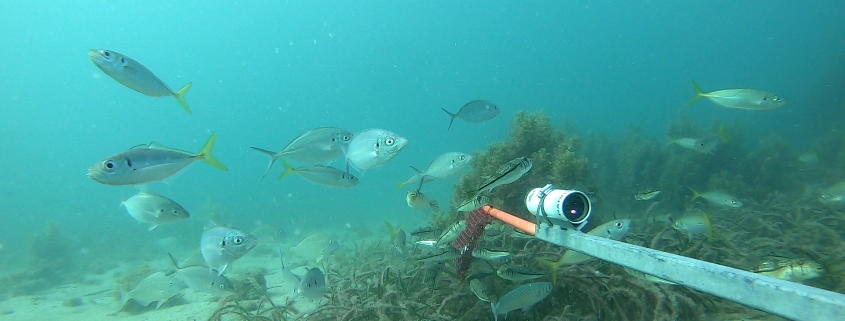From sonar to drones: Fishing around for best research results
Researchers are using everything from sonar and baited cameras to traps and drones as part of a project looking at the distribution and abundance of key fishes and invertebrates in Cockburn Sound.
The Department of Primary Industries and Regional Development’s Dr Danielle Johnston, who is research lead on the project, said a wide range of methods were being used to monitor larvae, juveniles and adults of commercially, recreationally and ecologically important species. They were being sampled in various habitats and depths.
“February this year marked the end of 18 months of field work which included 220 days sampling with more than 300,000 individual fish and invertebrates identified, representing 244 taxa from 88 families,” Dr Johnston said.
She said using many methods for monitoring and assessing distribution of various species meant researchers needed to spend a lot of time in the field.
”Spring 2022 was the busiest field season to date, with 56 days of sampling, including intensive spawning biomass and larval surveys for snapper and blue swimmer crab.”
DPIRD Scientist Dr Daniel Yeoh, who is part of the WAMSI Westport Marine Science Program team and coordinating field surveys for the project, said drones were being tested to determine if they could be used for surveying changes in abundance of snapper in spawning aggregations.
“Snapper are a bigger fish and can form very dense schools near the surface, so we’re trialing drone surveys to see if we can survey them from the air.”
Sonar was proving useful for detecting schools of snapper further below the surface and the technology was also being used to study schools of smaller forage or bait fish such as sardines and anchovy.
“The acoustics work is being done in collaboration with a CSIRO team in Hobart who are leaders in these acoustic surveys.”
“There are five main species of bait fishes we are looking at including pilchards or sardines and scaly mackerel.”
He said while recreational fishers were sometimes less interested in bait fishes, they were a crucial part of Cockburn Sound’s ecology.
“Some of these species are caught for human consumption or bait, but they are particularly important as prey for penguins and dolphins and we have been providing other researchers with samples and data to use in their projects,” Dr Yeoh said.
“We are looking at what species of fish are found in Cockburn Sound and how their abundance and distribution changes throughout the year.”
“We’re also checking key water quality parameters such as temperature, salinity, dissolved oxygen and turbidity during most of our sampling.”
He said baited remote underwater video stations, which provided researchers with a close-up look at fish, will be put out at more than 150 locations this winter.
“The BRUVs are designed to spot juvenile snapper which were spawned during the last spring,” Dr Yeoh said.
“They grow throughout the year and by winter we can see them on the cameras.”
The project is a collaboration between the Department of Primary Industries and Regional Development, Murdoch University, Curtin University, Edith Cowan University and CSIRO.

